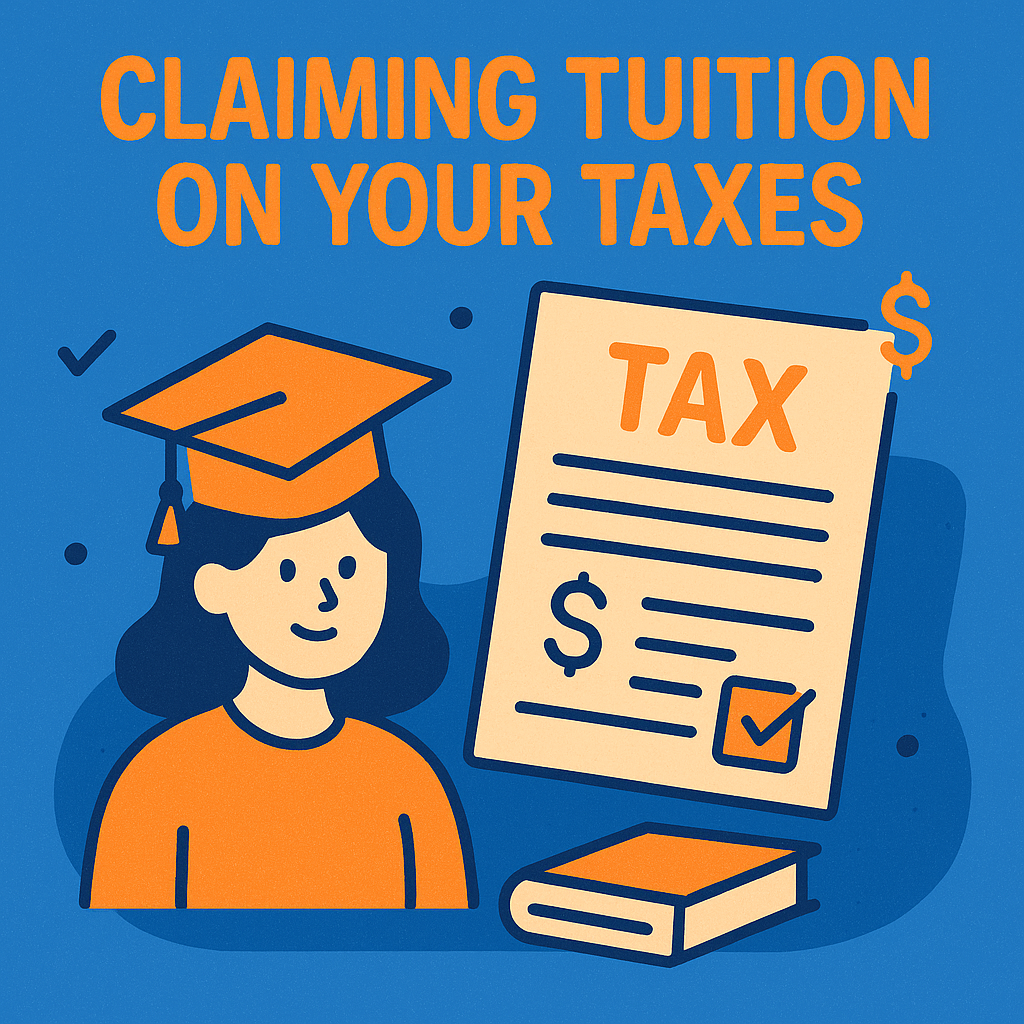Can You Claim Tuition If You’re Paying with Student Loans?
Paying for college can be tough, but student loans can help cover your tuition costs. If you’re using student loans to pay for your education, you might wonder: Can you still claim tuition expenses on your taxes? The answer is yes—but with a few things to keep in mind. Here’s what you need to know:
1. Can You Claim Tuition If You’re Paying with Student Loans? 💸
Yes, you can claim tuition expenses on your taxes, even if you’re paying with student loans. The important thing is that you’re still paying for the tuition, whether it’s through your own funds, a scholarship, or loans. As long as the money is used for qualified education expenses, you may be eligible for tax benefits.
2. What Tax Benefits Are Available? 🏆
There are two main ways you can potentially benefit from your tuition payments on your taxes:
2.1. The American Opportunity Credit (AOC) 🌟
The American Opportunity Credit offers up to $2,500 per eligible student for tuition, fees, and course materials. You can claim this credit for the first four years of higher education.
Qualified expenses: Tuition, fees, and course-related materials (books, supplies, equipment).
Tax benefit: Up to 40% of the credit (up to $1,000) is refundable, meaning you could get a refund even if you owe no taxes.
If you’re using student loans to pay for tuition, the amount you borrow can help you qualify for the AOC, as long as you meet other eligibility requirements (such as being enrolled at least half-time in a degree program).
2.2. The Lifetime Learning Credit (LLC) 💡
The Lifetime Learning Credit is another option, offering up to $2,000 per year for qualified education expenses. Unlike the AOC, this credit isn’t limited to the first four years of college and can be claimed for graduate courses and continuing education.
Qualified expenses: Tuition and required fees.
Tax benefit: It’s a nonrefundable credit, meaning it can reduce your tax liability to zero, but you won’t get a refund if the credit exceeds the taxes you owe.
2.3. Tuition and Fees Deduction (Temporarily Suspended) ⏸️
In past years, there was a tuition and fees deduction that allowed you to deduct up to $4,000 of your qualified expenses. However, this deduction has been temporarily suspended and is not available for tax years after 2020, unless Congress extends it in future years.
3. What Counts as Qualified Education Expenses? 📚
To claim these credits, your student loans must cover qualified education expenses, which typically include:
Tuition 💵
Required fees 🏫
Course-related books, supplies, and equipment (if required by the school) 📖
However, living expenses (like rent, utilities, or food) and personal expenses (such as transportation) are not considered qualified education expenses, even if you’re paying for them with loan funds.
4. How to Claim the Credit or Deduction 📝
To claim the American Opportunity Credit or Lifetime Learning Credit, you’ll need to complete Form 8863 and attach it to your Form 1040 tax return.
The school will provide you with a Form 1098-T, which shows how much tuition and fees you paid.
You can use this form to calculate your eligibility for the credits.
5. Can You Claim If You Haven’t Paid the Loans Yet? ⏳
Yes, you can still claim the credit even if you haven’t paid off the loans yet. The IRS cares about what you paid for tuition (not whether you paid with loans, savings, or other funds). As long as you used loan money to pay for tuition or qualified expenses, you can claim the credits for those expenses.
Final Thoughts 🌟
Paying for tuition with student loans doesn’t stop you from taking advantage of tax credits like the American Opportunity Credit or the Lifetime Learning Credit. The key is ensuring that the loan money is used for qualified education expenses.
Remember to gather all necessary forms, like Form 1098-T, and consider working with a tax professional to ensure you’re getting the most out of your educational expenses when tax season rolls around! 🎉
